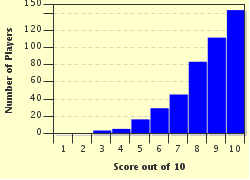Quiz Answer Key and Fun Facts
1. The scientific family name for this animal derives from its very large feet, which you can see in the picture. It also appears on the coat of arms of the country where most of them live. Which of these is it?
2. The paw pictured belongs to a member of a cat family, the most sociable of the cats which live in the wild. Which of these is it?
3. Unlike most of the animals in the quiz, these feet belong to a creature often seen in our gardens. Which rodent, found in most continents and renowned for its agility, is attached to these paws?
4. Although they are not shrouded in mist, can you identify the ape to which these feet belong?
5. A picture of this animal's feet would be too much of a giveaway, so here is a photograph of the footprint left by the African species. Which large mammal is it?
6. The foot in the photo belongs to a member of the Mustelidae family, and belongs to a mammal found mainly in the coastal regions of the Pacific. Which of these is it?
7. This is an unusual angle from which to view this predatory mammal, which lives mainly in the Arctic. Which of the choices is it?
8. If you own a dog, you've probably seen this pose, but these paws belong to which member, the largest, of the canine family? (Common English family name only, not a specific species).
9. These fearsome looking claws are needed for digging out burrows in the ground. They belong to which nocturnal creatures which can be found in Europe, North America and parts of Asia?
10. I'd recommend you not to try and catch this animal, the largest of its family, by its tail. Can you recognise it just from its paw?
Source: Author
rossian
This quiz was reviewed by FunTrivia editor
guitargoddess before going online.
Any errors found in FunTrivia content are routinely corrected through our feedback system.


